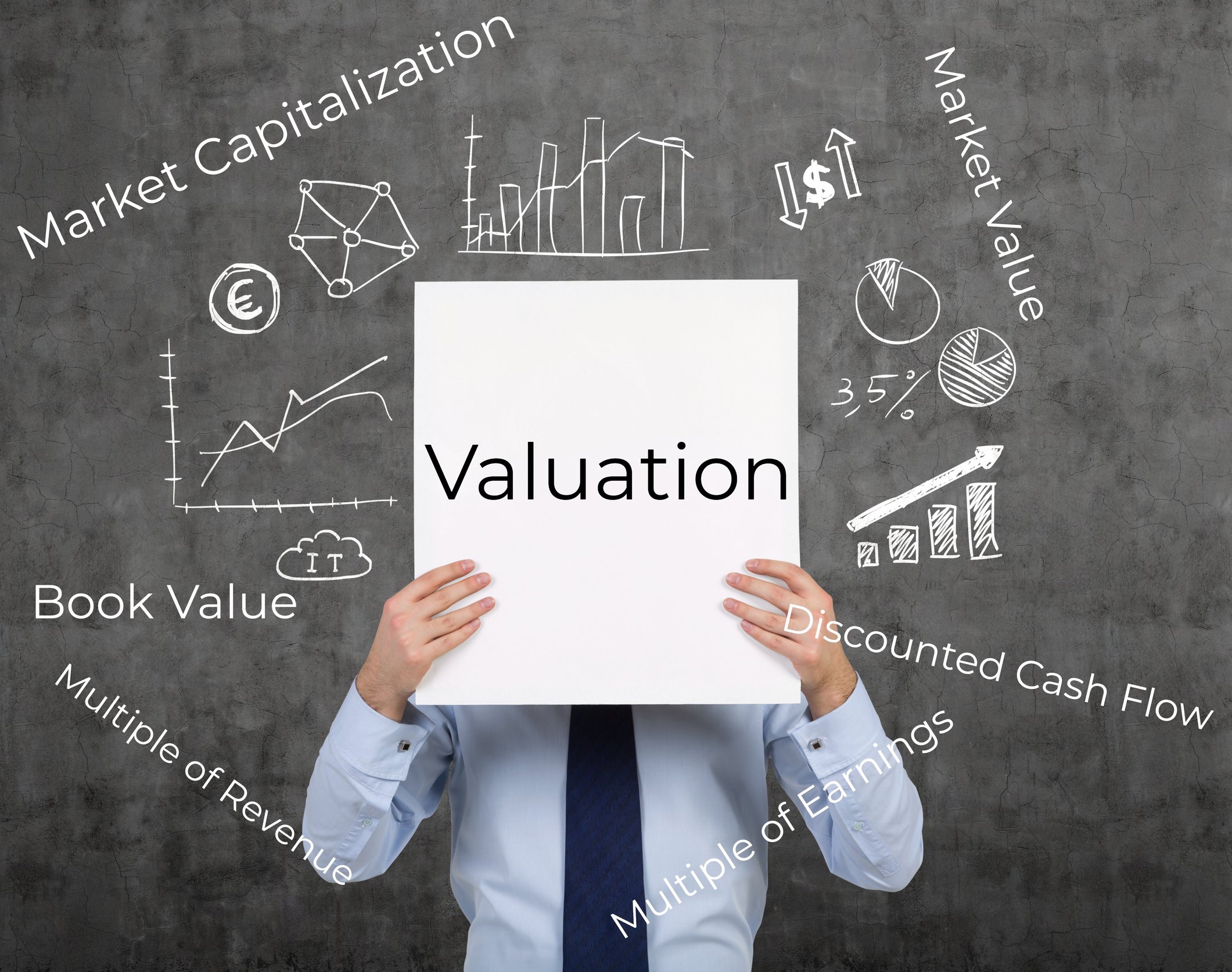By: Patrick Ungashick

Business Valuations & Exit Planning: A Business Owner’s Guide
This is part three of a four-part series on business valuations, written for business owners who need to understand how business valuations are used in the process of preparing for your business exit. As this series deals with tax and legal subject matters, readers are advised to consult their tax and legal advisors. This material is for educational use only.
Business Valuation Methods
Determining the value of a privately held company is a combination of science and art. Professional appraisers have a toolbox full of valuation methods available to them to calculate the value a company (or in some cases a partial interest in that company.) Applying these methods and doing the math correctly is science. But selecting which method or methods to use is art, because that is determined by the appraiser based on his or her judgement. For you, it is important to know some of the more common methods so you can intelligently discuss them with your valuation professional, because which valuation methods the appraiser uses can produce a dramatically different result. For example, one method might produce a $50 million valuation for a company, while another method might produce a $25 million valuation for the same company—the differences are often that dramatic. So which valuation method, or methods, your professional applies to your company is a critical issue that many business owners overlook or don’t know enough to ask.
There are many valuation methods available to the appraiser, and many methods have several variations. You do not need to be an expert on this topic, but several methods are essential to recognize. They are:
Business Valuation Method #1 - Market Capitalization
Market capitalization, or “market cap,” is arguably the simplest method of business valuation. It is calculated by multiplying the company’s current share price by its total number of shares outstanding at that point in time. For example, if a company’s current share price is $100 per share, and there are one million shares of the company outstanding, then the market cap is $100 million.
Market cap is simple, but it’s typically only applicable to publicly-traded companies because privately held companies don’t have shares traded in the open market. Despite this, it is still important to know what market cap is because part of the valuation process might involve comparing your privately held company to the market cap of publicly traded companies.
Business Valuation Method #2 – Market Value
The market value method attempts to calculate a company valuation based on comparing your company to similar companies in the same industry that have recently been purchased. Market value is perhaps the most subjective method because the professional appraiser must determine and select which companies are comparable despite that in the real world there are no exact matches. Once comparable companies have been identified, then the appraiser must use his or her judgement and apply weighting factors to companies that are dissimilar in characteristics. For example, if your company is doing $25 million in revenue and the valuation professional is looking at data about an industry competitor which recently sold, but this competitor is a $1 billion company, that’s not an apples-to-apples comparison. In that case, the appraiser likely would discount the multiple used on the $1 billion company sale to some lower number applicable to your $25 million company. All of this requires the valuation professional to apply his or her judgement, which is subjective.
All that said, the market value method focuses on understanding what your business might be worth in the open market.
Business Valuation Method #3 - Multiple of Earnings
This method is one of the most important, particularly when considering selling some or all of the company to an outside buyer. Under this method, the company’s recent earnings are applied to a multiplier, which varies with the industry and the economic environment. For example, if the company did $3 million of EBITDA last year and the current multiple for that industry is six, then the potential valuation is $18 million. Typically, the period of time used is the prior calendar year or the trailing twelve months, although if earnings have been volatile over the last few years a weighted average might be used. It is critically important when working with this method that you have accurately calculated your EBITDA, as there are many factors to consider and considerable room for making judgement calls on how certain expenses are treated.
Business Valuation Method #4 - Multiple of Revenue
Under the multiple of revenue method, a stream of revenues (rather than earnings) generated over a certain period of time is applied to a multiplier, which varies with the industry and economic environment. Like with the multiple of earnings method, the period used is commonly the prior calendar year or trailing twelve months, although if revenue has been volatile over the last few years, a weighted average might be used. This method is less commonly used than the multiple of earnings method. It is typically only used in certain industries, such as professional services firms (accounting, legal, engineering, consulting, etc.) and some tech industries.
Business Valuation Method #5 - Discounted Cash Flow (DCF)
DCF is similar to the multiple of earnings method. Using DCF, the valuation professional computes a valuation by taking a projection of the company’s future cash flows, and then discounting them to a single present value—so that cash earned in later years is discounted more heavily than cash earned in more immediate years. The main difference between DCF and the multiple of earnings method is that DCF takes into account inflation and the time value of money when calculating the present value.
Business Valuation Method #6 - Book Value
Book value is simply the value derived by subtracting the total liabilities of a company from its total assets. Book value, therefore, assumes that the company goodwill is zero. Book value is often synonymous with the company’s liquidation value. Book value is typically used in specific situations, such as, companies that have considerable value tied up in their tangible assets. Even when used, book value as a valuation method is not commonly used by itself but rather is often calculated and then included alongside other valuation methods to produce a weighted overall value. (See below.)
This is by no means an exhaustive list of the business valuation methods available to the valuation professional. Also, if you are trying to learn more about these methods take note that different valuation professionals may use different terms to describe the same method, which can be frustrating. However, being familiar with the six listed here provides a foundation from which you can discuss how your valuation professional will select and apply a particular valuation method to your situation.
Business Valuation – A Weighted Approach
Now that we understand there are different valuation methods available to the appraiser, and each method examines different issues and emphasizes different areas, it becomes clear why different business valuations can produce widely varying results even when appraising the same company. To address this, and to create a more balanced and realistic analysis, valuation professionals will commonly calculate a business valuation using multiple methods and then take a weighted average of those methods to produce a final, bottom-line valuation.
While this step reduces some of the disparity between results produced by different methods, it introduces another round of subjectivity into the process as the appraiser has to determine which methods to use, and then how to weight the results. Generally, certain methods tend to earn a greater weighting depending on the nature of the business, the presence or absence of specific data, and the purpose of the valuation. If you hire a valuation professional to appraise your company, it will be vital to discuss which valuation methods are being used and why, and how and why the professional determined the weighted analysis.
Your Next Steps
Click to register to receive subsequent articles in this series.
If you have a quick question coming out of this article, click here to submit it to us.
Or, if you want to discuss your situation in more detail, we can set up a confidential and complimentary phone consultation at your convenience with one of our professionals.











